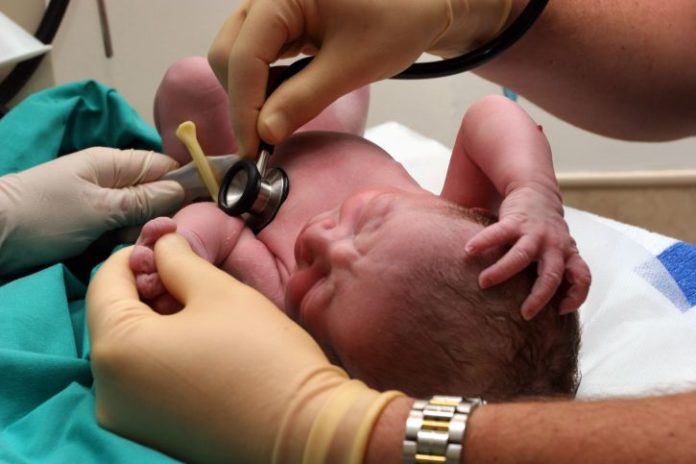Breech births increase the risk of complications for the mother and baby when the amniotic sac ruptures early. These findings were presented October 17 by a researcher from Loyola University Health System at the 79th Annual Meeting of the Central Association of Obstetricians and Gynecologists in Chicago.
Preterm, premature rupture of the amniotic sac contributes to one-third of all preterm births. A rupture is considered premature when it occurs before the onset of labor prior to 37 weeks’ gestation. When the amniotic sac breaks prematurely, it can lead to serious problems for the baby and the mother, including infections, heavy bleeding, oxygen deprivation to the fetus and stillbirths. This study set out to determine if fetal position further complicates these issues.
“Until now, there has been limited information available to guide management decisions in pregnancies affected by a premature rupture of the amniotic sac when the baby is breech,” said Jean Goodman, MD, lead investigator and division director of Maternal-Fetal Medicine at Loyola University Health System, and professor of Obstetrics & Gynecology at Loyola University Chicago Stritch School of Medicine. “We know now that fetal position affects outcomes for the mother and baby when a woman’s water breaks prematurely.”
This study evaluated 569 women who had their water break for various reasons between 24 to 34 weeks’ gestation. Of those, 458 did not have breech babies and 111 did. Both groups had similar characteristics, including age, race, medical and social history.
The breech group was significantly more likely to have low amniotic fluid (68 percent versus 50 percent), and deliver at a significantly earlier gestational age (30.05 weeks versus 31.52 weeks). Breech pregnancies also were significantly more likely to have an abruption where the placental lining separates from the uterus causing serious complications (23 percent versus 12 percent). This group also was more likely to have the fetus die in utero (3 percent versus 0 percent).
Neonatal outcomes were strikingly worse in the breech group with increased occurrence of respiratory distress syndrome (53 percent versus 31 percent), necrotizing enterocolitis (NEC), a life-threatening intestinal issue (15 percent versus 6 percent) and neonatal death (9 percent versus 3 percent).
“This study provides valuable information for counseling and managing women with such high-risk pregnancies,” Dr. Goodman said. “Additional research will be necessary to continue to guide our care for these women.”
Source: Loyola Medicine











